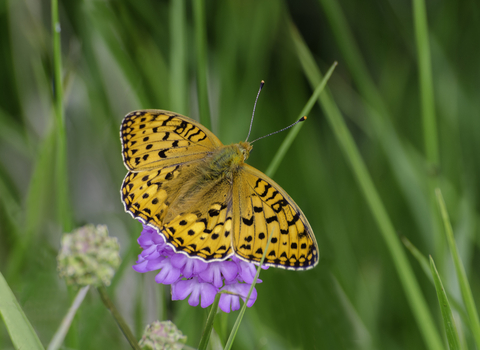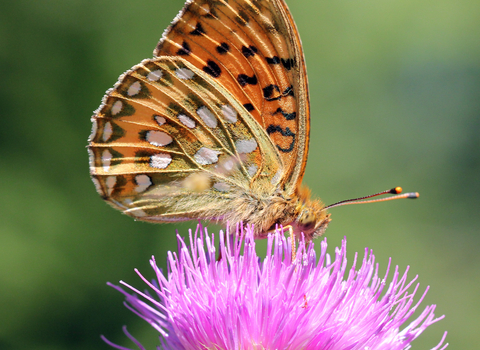
Dark green fritillary ©Les Binns

Dark Green Fritillary ©Jim Higham
Dark green fritillary
The dark green fritillary is actually an orange butterfly with black spots. It gets its name from the dark green hue to the undersides of its hindwings. A strong flier, it can be seen on open, grassy habitats.
